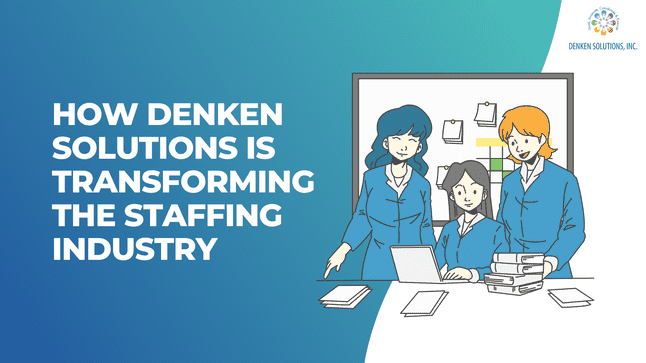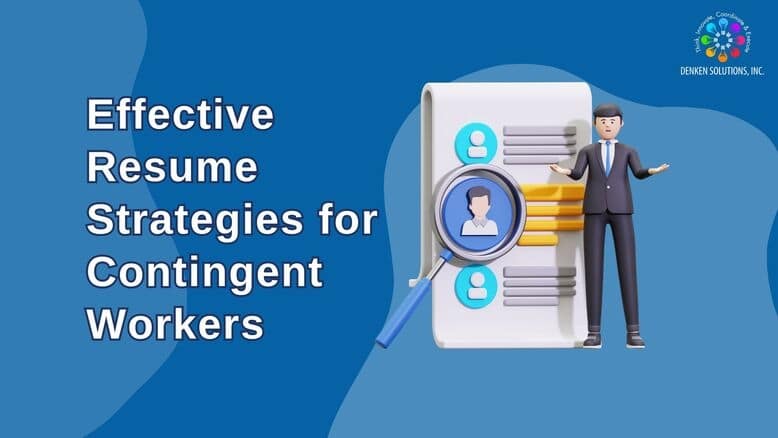The Growing Demand for Sustainable Strategies in the Energy and Utility Sector
With the world moving toward a greener and cleaner future, energy and utility companies are facing increasing pressure to shape sustainable strategies for saving energy and resources and, at the same time, switch to a digitally connected mode of operation. This transition has elevated the demand for renewable energy and utility products, resulting in increased production levels and more job opportunities. However, along with these positive effects, the transition has brought immense utility and energy staffing challenges.
Citing industry reports such as the 2019 Workforce Development Report from the American Gas Association, this shift has made the energy sector’s workforce increasingly difficult to manage due to aging employees and skills gaps, which further complicates the transition to renewable energy.
The utility sector workforce challenges are pushed by a number of factors, including the deficiency of skills and competencies in the existing workforce, an aging workforce, lack of flexibility to scale, outdated training and development processes, and the evolution of digital tools and technologies. In this article, we will focus on these key challenges and learn how these challenges can be addressed with a contingent workforce in the energy and utility industry.
Top Energy and Utility Sector Workforce Challenges
More Job Opportunities; Shortage of Skills
The shift in consumers’ expectations and the move towards sustainable technologies and digital tools causes energy and utility companies to hunt for niche expertise. In fact, reports show that 70% of utility employers face difficulties filling skilled positions, primarily due to this skills gap. The traditional job roles are reviewed and replaced with new roles demanding specialized skills and talents. However, the retiring workforce, combined with in-house factors such as financial constraints, lack of upskilling and training opportunities, and lack of competitive salaries and employee benefits, prevents employers from getting hold of the best energy and utility talents. External market factors, such as economic uncertainties and rising competition in the energy and utility industry, also create challenges for employers in attracting top talent.
The Aging Energy and Utility Workforce
The retiring workforce is a crucial challenge in the energy and utility sector. The average age of employees working in this sector is reported to be above 50, and according to the U.S. Bureau of Labor Statistics, approximately 25% of the workforce is expected to retire by 2030. This retirement crunch tends to create a major skill gap in the talent pipeline, causing energy and utility companies to take a strategic approach to hiring and retaining fresh talents.
Age-Old Training and Development Processes
Training and development remain a major part of the motivation and retention of employees. Every employee wants to develop new skills, attain new knowledge, and grow in their professional life. The prevalence of age-old methods of training and mentorship prevents employees from upskilling and reskilling. This further hinders them from keeping pace with the latest technological innovations and industry trends, resulting in knowledge gaps. For instance, a recent survey by McKinsey found that nearly 60% of energy sector workers reported feeling unprepared for the rapid adoption of digital tools in the industry.
The Need for Digital Transformation
The emergence of digital technologies has raised the bar for energy and utility companies. The adoption of innovative technologies such as Artificial Intelligence (AI), the Internet of Things (IoT), Enterprise Resource Planning (ERPs), Big Data, and other end-to-end software solutions have become necessary for optimizing business operations, reducing costs, minimizing risks, and enhancing efficiency. The successful adoption of these technologies again calls for new skills and competencies. Studies show that 80% of energy companies report difficulties in finding workers with the necessary digital skills, a gap that can be filled by hiring contingent workers with specialized digital expertise.
Inability to Scale
The rise in demand for renewable and sustainable resources requires energy and utility companies to maintain flexibility and agility to confidently manage change and innovation. Employers often need help supporting innovation when their existing human resources show resistance to change. The absence of adequate manpower, technologies, physical resources, and financial resources further adds obstacles to the change or innovation management process, making it difficult for companies to scale.
How Can You Address the Above Challenges by Opting for a Contingent Workforce in Energy and Utility Companies?
With a contingent workforce, you can efficiently address these challenges and mitigate them in your energy and utility business. Here’s how:
Contingent workers strengthen your team with niche expertise and fill up skill gaps: With a contingent workforce in energy and utility companies, you can efficiently bridge the skill and knowledge gaps prevalent in your existing teams. A contingent workforce can address the skill gaps caused by retiring employees, bringing in specialized expertise for critical roles. These workers often possess advanced technical skills, having worked with the latest digital technologies in different sectors.
Contingent workers stimulate the knowledge transfer process: When your existing conventional training and development programs fail to upskill and reskill your full-time staff, a contingent workforce in energy and utility companies comes to the rescue. Since contingent workers are hired and engaged in short-term projects, they usually do not expect employers to provide them with comprehensive training and development programs. Instead, while working with full-time teams, contingent workers present and share their distinctive ideas and creative abilities gained from past work experience. This facilitates the knowledge transfer process within teams, channeling the path for innovation and success.
Contingent workers do not require the usual onboarding and training process: Mostly, employers hire contingent workers with the help of reputable staffing agencies. Staffing firms not only possess an extensive range of contingent talent pools but also follow a precise hiring process to ensure the smooth integration of contingent workers in energy and utility companies. In contradiction to full-time hires, contingent workers do not require an all-inclusive onboarding and training program, thereby saving time and costs for employers.
Related read: Utilizing the Benefits of Contingent Staffing to Maximize Business Potential
Contingent workers help your business remain flexible and agile: Unlike your existing workforce, contingent workers remain open to support innovation and change as it gives them the right opportunity to showcase their skills and attain relevant knowledge. By engaging contingent workers in your energy and utility company, you can efficiently scale your business, giving timely responses to changing market conditions. Once you have fulfilled your business needs, you can free up your contingent workforce and engage them again during hours of need.
Contingent workers give you the right grounds for digital transformation and innovation: As stated earlier, to bring successful digital innovation and improvement in energy and utility companies, there is a need to employ a digitally empowered workforce. With their unique skills, fresh perspectives, and past work experience, contingent workers can successfully propel innovation and digital transformation, pushing energy and utility companies toward growth and success. For example, a case study by Accenture shows how contingent workers played a key role in accelerating AI adoption in utilities, improving operational efficiency by 30%.
Why Should Denken Solutions Be Your Top Choice for Building a Contingent Workforce in Energy and Utility Companies?
Denken Solutions stands out for its professionalism, in-depth understanding of energy and utility industry trends, and high commitment to quality. Our dedicated team of experts ensures to conduct periodic research on ongoing and upcoming developments in the energy and utility sector that helps us in shaping proper workforce strategies. By undertaking a collaborative approach, we aim to get a detailed understanding of our client’s requirements, thereby tailoring the perfect contingent workforce solutions for them. Besides prioritizing a streamlined process of building a contingent workforce in energy and utility companies, we ensure to focus on compliance and best employment practices, allowing for seamless integration of contingent workers into your business processes.
Conclusion
The need for a cleaner and greener future has caused energy and utility companies to focus on a sustainable workforce strategy. A contingent workforce can address the key challenges faced by energy and utility companies due to the transition in job roles and expectations, the need for digital transformation, the need for proficient skills and expertise, the aging workforce, and the inability to scale. So, what are you waiting for? Start building your contingent workforce in the energy and utility business. Get in touch with us today to know how exactly we can assist you.



